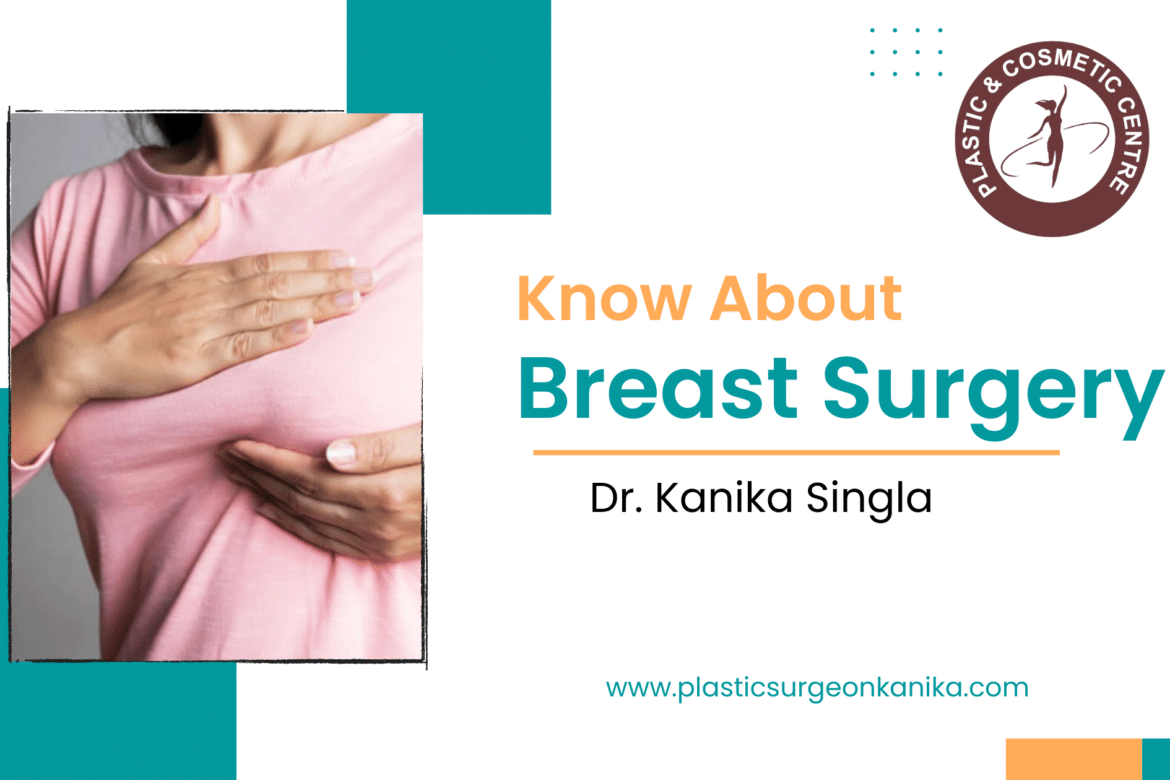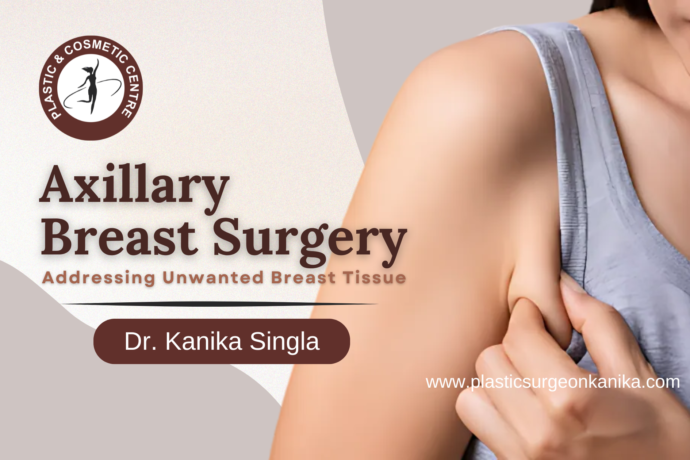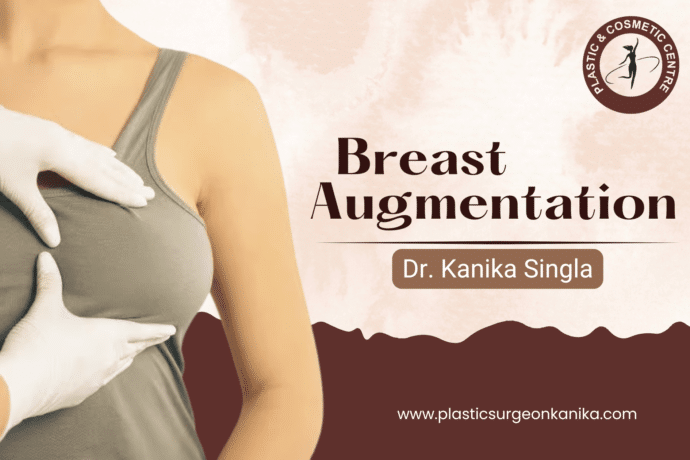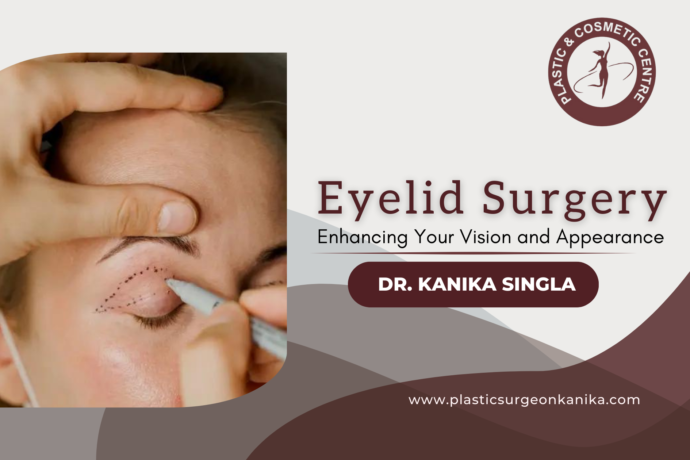A Complete Guide to Breast Surgery: Understanding the Procedures, Risks, and Recovery
Welcome to our blog where we delve into the realm of breast surgery, a transformative field that blends artistry with medical expertise to empower individuals in their journey towards confidence and wellness. I’m Dr. Kanika Singla, and I’m thrilled to guide you through the nuances of breast surgery, its various types, benefits, and considerations.
Understanding Breast Surgery
It encompasses a spectrum of procedures designed to address diverse needs and goals, from aesthetic enhancements to functional improvements and reconstructive interventions. Let’s explore some of the most common types:
1. Breast Augmentation:
Breast augmentation, or augmentation mammoplasty, is a procedure aimed at enhancing breast size and shape using implants or fat transfer techniques. This procedure is sought after by individuals looking to restore volume lost due to pregnancy, weight fluctuations, or simply to achieve their desired aesthetic appearance. With advancements in technology and surgical techniques, patients can now choose from a variety of implant types, shapes, and sizes, ensuring a personalized approach tailored to their unique anatomy and preferences.
2. Breast Reduction:
Breast reduction surgery, also known as reduction mammoplasty, is a life-changing procedure for individuals experiencing physical discomfort and emotional distress due to excessively large breasts. By removing excess breast tissue, fat, and skin, breast reduction surgery not only alleviates symptoms such as back, neck, and shoulder pain but also enhances overall body proportion and self-confidence. Patients often report significant improvements in their quality of life following breast reduction, enabling them to engage more comfortably in physical activities and clothing choices.
3. Breast Lift (Mastopexy):
A breast lift, or mastopexy, is a rejuvenating procedure designed to lift and reshape sagging breasts, restoring a more youthful and perky contour. This procedure is particularly popular among women who have experienced changes in breast shape and firmness due to pregnancy, breastfeeding, or aging. During a breast lift, excess skin is removed, and the surrounding tissue is tightened to achieve a more youthful appearance. By repositioning the nipple and areola to a higher position on the breast mound, a breast lift can enhance both aesthetic harmony and self-confidence.
4. Breast Reconstruction:
Breast reconstruction is a profoundly impactful procedure aimed at restoring one or both breasts following mastectomy or lumpectomy for breast cancer treatment. This transformative journey involves various techniques, including implant-based reconstruction, autologous tissue transfer (flap reconstruction), or a combination of both, depending on individual factors such as body type, cancer treatment history, and personal preferences. Breast reconstruction not only helps restore physical symmetry and wholeness but also plays a crucial role in empowering breast cancer survivors to reclaim their sense of femininity, confidence, and wellness.
Risk in Breast Surgery
Breast surgery, whether for augmentation, reduction, lift, or reconstruction, carries inherent risks that patients must consider. These risks may include infection, bleeding, adverse reactions to anesthesia, changes in nipple sensation, implant complications (such as rupture or capsular contracture), and scarring. While these risks are relatively low, they should be carefully weighed against the potential benefits of the procedure. Choosing a qualified and experienced surgeon, following pre- and post-operative instructions diligently, and attending follow-up appointments are essential steps to minimize risks and achieve optimal outcomes in breast surgery.
Recovery Process and Follow-Up Care
Following breast surgery, the recovery process varies depending on the type of procedure performed. Patients can expect temporary discomfort, swelling, and bruising, typically subsiding within a few weeks. Adhering to postoperative instructions, including wearing compression garments and avoiding strenuous activities, is essential for a smooth recovery. Follow-up appointments with the surgeon are crucial to monitor healing progress, address any concerns, and ensure optimal outcomes, empowering patients to confidently embrace their transformed selves.
Conclusion: Empowering Transformations
Breast surgery goes beyond physical transformations; it’s about empowering individuals to feel confident, comfortable, and in control of their bodies. Whether enhancing aesthetics, alleviating discomfort, or overcoming the challenges of breast cancer, breast surgery offers personalized solutions to address diverse needs and goals. By partnering with a skilled and compassionate plastic surgeon like myself, you can embark on a journey towards enhanced confidence, wellness, and self-expression.
If you’re considering breast surgery or have any questions, don’t hesitate to reach out. Together, we’ll navigate this transformative journey with care, expertise, and a commitment to your well-being.
Yours in wellness, Dr. Kanika Singla
FAQs:
Recovery time varies depending on the type of breast surgery performed. Generally, patients can expect temporary discomfort, swelling, and bruising, with full healing typically achieved within a few weeks. However, individual recovery times may vary, and it’s essential to follow postoperative instructions provided by the surgeon for optimal healing.
Common risks associated with breast surgery include infection, bleeding, adverse reactions to anesthesia, changes in nipple sensation, implant complications (such as rupture or capsular contracture), and scarring. While these risks are relatively low, they should be carefully considered and discussed with the surgeon before undergoing the procedure.
The impact of breast surgery on breastfeeding depends on various factors, including the type of surgery performed and the techniques used. While some breast surgeries, such as breast augmentation, typically have minimal impact on breastfeeding, others, such as breast reduction or certain types of reconstruction, may affect milk production and breastfeeding ability. It’s essential to discuss any concerns about breastfeeding with your surgeon before undergoing breast surgery to understand the potential implications and explore alternative options if necessary.










Leave a comment